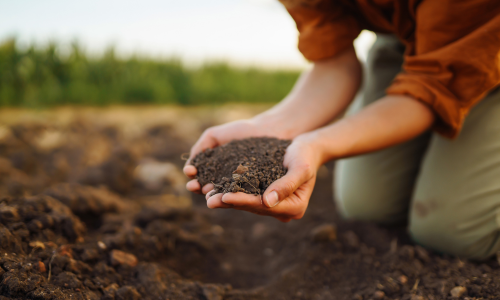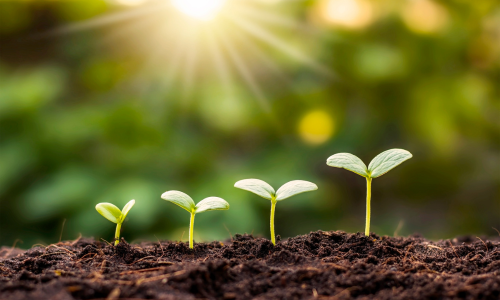Impact4Soil: The wait is almost over!
Only a few weeks before the Impact4Soil platform goes online! Developed by the ORCaSa team, this online knowledge tool is aimed at a range of professionals and experts from the research community, but also the private sector, NGOs, policy-makers, and anyone with an interest in the health of our soils.

Soil may be — very literally — the foundation of our food systems and many of our livelihoods. But, do we understand the signs of soil degradation, how to gage the extent of the damage, and our impact? Today, a wide spectrum of research is being carried out to address soil preservation and restoration, and there is a huge need to gather all the knowledge, results, and trends in one place. This initial observation inspired the ORCaSa team to design Impact4Soil.
‘The main need was to navigate through the mass of online information. It is very difficult to know which tool will not only save time but also is in global scope and accessible to both “general public” and highly scientific profiles’, states Emilie Vrot from Cirad, Direction des systèmes d’informations (DSI).
A tool that speaks to the soil carbon research community
Soil is a global subject of study, and Impact4Soil will enable synergies and collaborations by bringing together researchers, farmers, foresters, spatial planners, land managers. Stated simply, the platform will cover any type of soil category, from every possible angle.
For the research community, Impact4Soil will offer seamless access to soil carbon-related data and meta-analysis, scientific publications, but also best practices and trends. Thanks to its comprehensive and integrated design, Impact4Soil will allow users to:
- Compare results with the existing literature
- Discover new insights to complement their work
- Boost visibility of research partnerships, activities, and outputs
‘Back in the 1990s, I was involved in putting together the GTCE Soil Organic Matter network (SOMNET) database, so I am delighted to see how much functionality Impact4Soil has’, explains Pete Smith, professor of Soils and Global Change at the University of Aberdeen. ‘We could only have dreamed of this back then! The geospatial data layers are incredible, but the platform also provides access to over 13,000 publications concerned with the impact of different interventions Soil Organic Carbon, practical examples and guidance on best land management practices, networks and related datasets. All in all, Impact4Soil is a comprehensive one-stop-shop for everything soil carbon related.’
‘The geospatial data layers are incredible, but Impact4Soil also provides access to over 13,000 publications […] Impact4Soil is a comprehensive one-stop-shop for everything soil carbon related.’
Soil is everyone’s business
In Europe, 60-70% of soils are considered to be in poor health due to unsustainable management practices and the effects of climate change. Healthy soil has the capacity to absorb and store carbon; this means that it has potential to help restore biodiversity and reach net zero. In recent years, the EU has expressed a commitment to supporting research and innovation to foster the transition to healthy soils. The EU Mission ‘A Soil Deal for Europe’ deals expressly with the intersection between soil health, food, nature, and climate. This and the EU Soil Strategy for 2030 explicitly focus on soil-related topics, but they are inherently linked to priorities of the European Green Deal and other EU initiatives as well as international frameworks (UN Sustainable Development Goals, 2015 Paris Agreement).
Even if the policies themselves call for a transition to healthy soil, there is still a knowledge gap between researchers, policy-makers and the wider community. This is where the Impact4Soil platform has potential to foster knowledge exchange and inform policy and practices. Beyond words, charts, or tables, the interactive maps available on Impact4Soil will be a valuable tool for all types of users, beyond just the research community. For instance, policy-makers can see verified scientific evidence and modelling, from trusted sources, in a deeper way, thus helping to develop effective policy decisions to restore soil biodiversity. Businesses can also use these findings to explore soil carbon storage and absorption practices. Impact4Soil will also offer best practices for soil carbon monitoring, reporting, and verification (MRV) systems.
3, 2, 1…countdown to the Impact4Soil platform launch!

The platform will be launched in the next few weeks, with a set of video tutorials and guidelines for users. The development and piloting teams are looking forward to the platform going live and getting engagement.
‘We conducted a comprehensive inventory of the main online platforms to analyse their content, target audience, and what they could offer’, explaines Julien Demenois, from CIRAD. ‘We prioritized selecting open-source platforms and developed partnerships with some to reuse their data (e.g., WOCAT and FAO). We also surveyed a wide range of target users to allow them to express their needs regarding the platform.’
‘It’s a big step for all partners involved, and more importantly a huge milestone in our journey to make a difference and give people and organisations the tools they need to make smart decisions’, expresses Susana Romao, from Vizzuality. ‘We are naturally very curious to see how the users will explore all the value the platform has to offer.’
Interested? Subscribe here and get ready for the official launch!